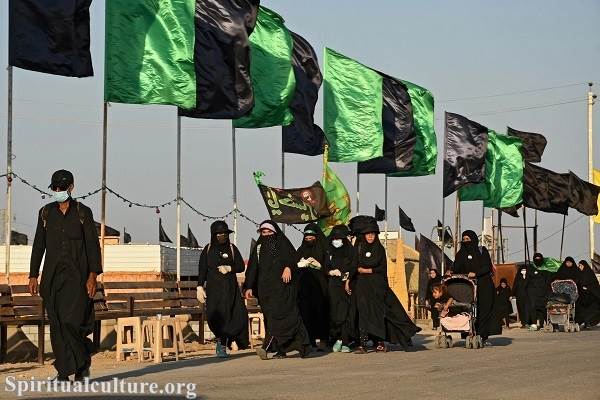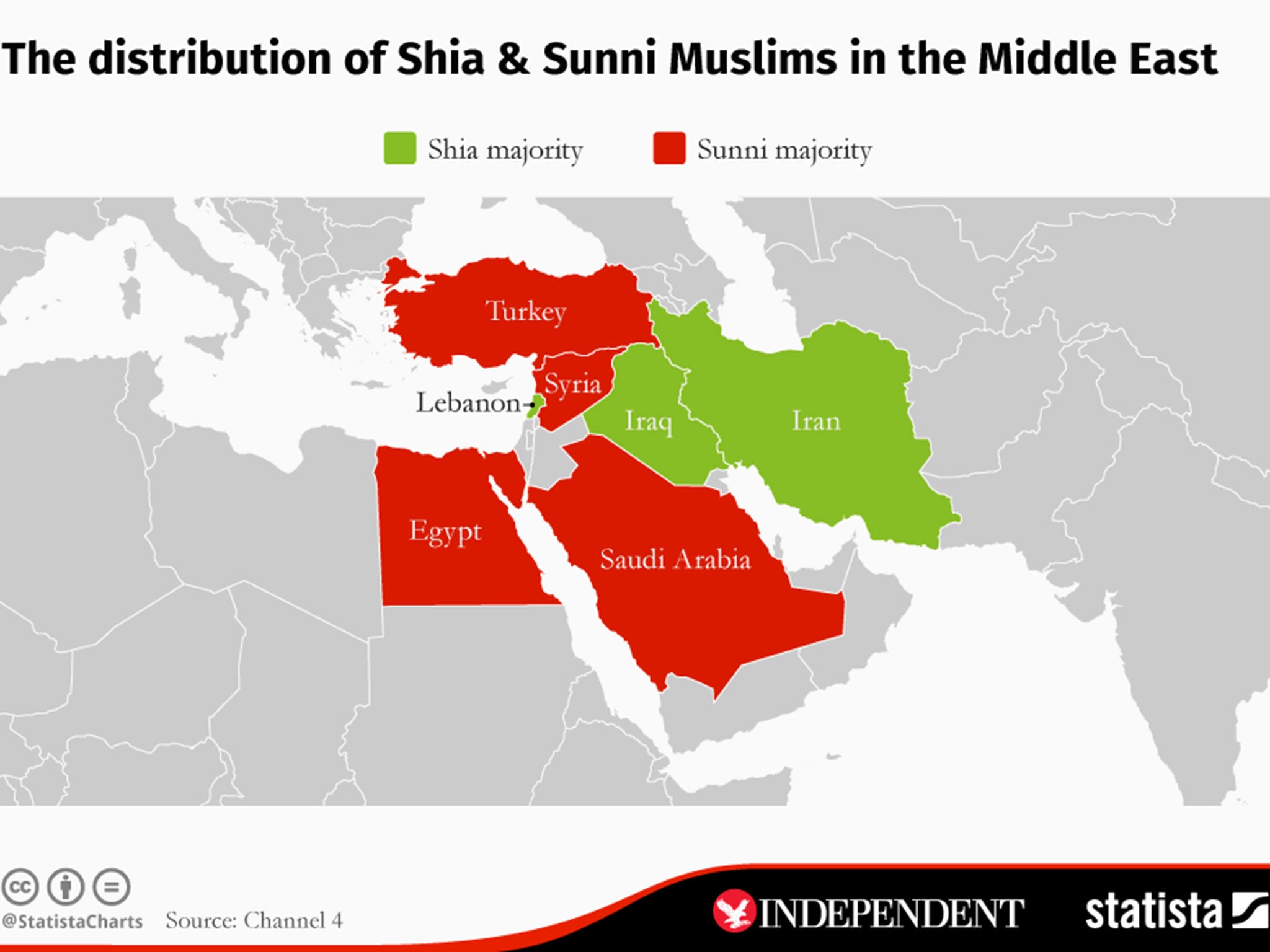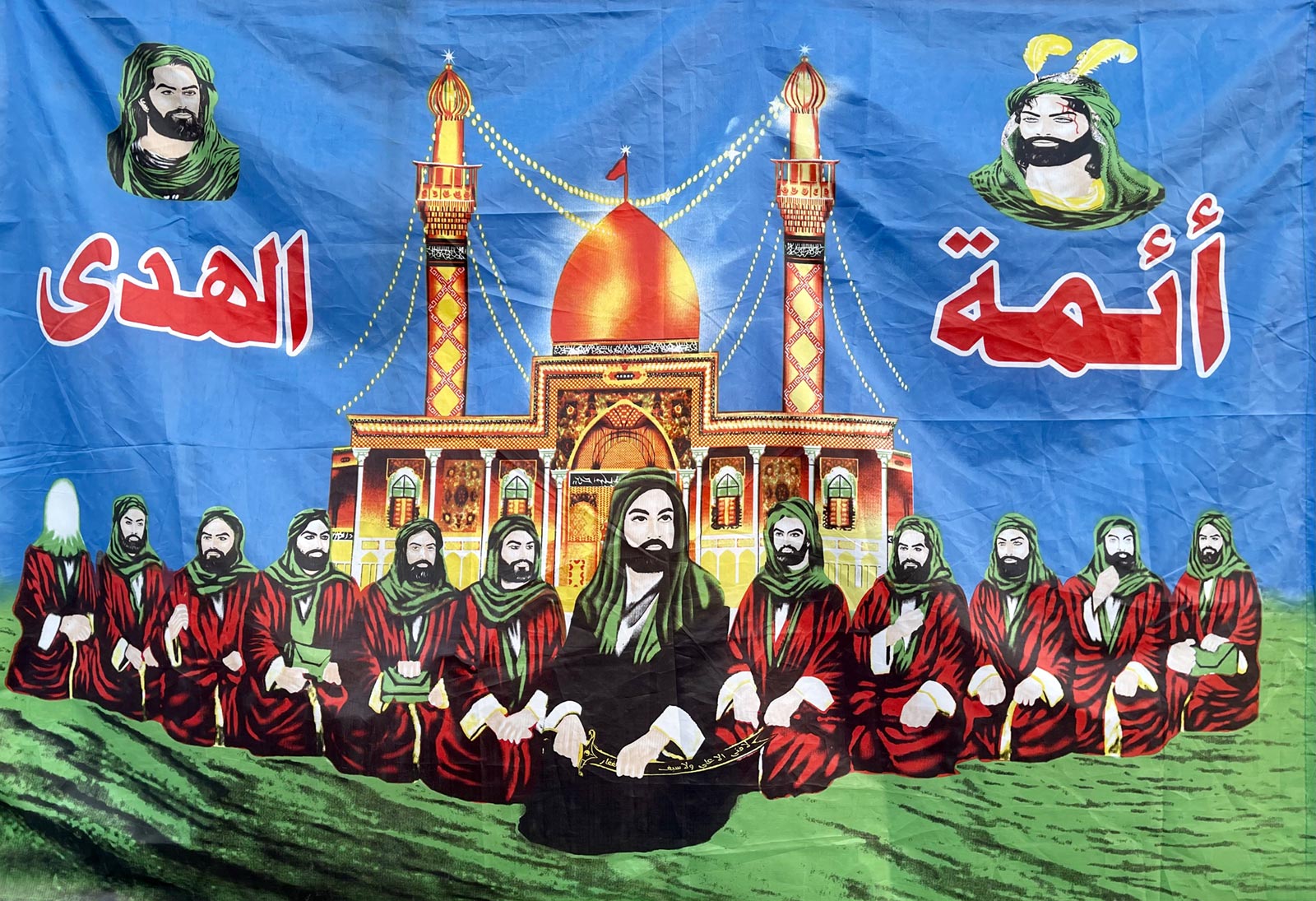Shia Iran: Unraveling The Heart Of A Nation's Identity
Iran, a nation steeped in ancient history and vibrant culture, is perhaps most profoundly defined by its religious identity. More than just a dominant faith, Shia Islam is woven into the very fabric of Iranian society, shaping its governance, foreign policy, cultural expressions, and the daily lives of its citizens. Understanding Iran, therefore, necessitates a deep dive into the unique and enduring legacy of Shia Islam within its borders.
This deep connection goes far beyond mere religious adherence; being an Islamic Republic of Iran inherently means it is a Shia Islamic Republic of Iran. This profound link, solidified over centuries, has not only forged a distinct national identity but has also played a pivotal role in regional dynamics, fueling centuries of rivalry and influencing alliances, conflicts, and diplomatic relations across the Middle East.
Table of Contents
- The Historical Roots of Shia Iran: From Sunni Majority to Shia State
- Demographics and Diversity: The Twelver Majority and Beyond
- Core Beliefs and Spiritual Pillars of Shia Islam in Iran
- Sacred Sites and Pilgrimage: Journeys of Faith in Iran
- The Islamic Revolution and Its Shia Foundation
- Shia Iran and Regional Dynamics: A Complex Web of Influence
- The Enduring Legacy of Shia Islam in Iran Today
- Conclusion: Shia Iran's Enduring Identity
The Historical Roots of Shia Iran: From Sunni Majority to Shia State
The journey of Iran from a predominantly Sunni Muslim land to the global heartland of Shia Islam is a fascinating and often tumultuous one, fundamentally shaping what we recognize today as Shia Iran. Prior to the 16th century, Iran was largely Sunni, a fact that might surprise many given its current identity. This dramatically shifted with the rise of the Safavid Dynasty. In 1501, Shah Ismail I conquered Iran and embarked on a transformative, nationwide campaign to establish Shia Islam as the state religion. This was not a gradual transition but a forceful imposition, with Sunni Muslims often compelled to convert, and tragically, many who resisted were murdered in the process. This era irrevocably brought in Iran's current Shia national identity, cementing a religious foundation that would endure for centuries. The establishment of Shia Islam as the state religion during the Safavid dynasty marked a pivotal moment, setting Iran apart from its largely Sunni neighbors and laying the groundwork for the religious schism that would fuel centuries of rivalry across the Middle East. This historical turning point, meticulously documented in works like "A History of Islamic Societies" by Ira M. Lapidus and "The Cambridge History of Iran," underscores the deliberate and often brutal efforts involved in forging this new religious identity. The legacy of Shia Islam in Iran is thus deeply intertwined with this foundational period, explaining why almost all of Iran's Shia today follow the Twelver branch, a direct result of the Safavid's religious policies.Demographics and Diversity: The Twelver Majority and Beyond
When discussing Shia Iran, the sheer demographic dominance of Shia Islam is undeniable. Over 95% of Iran's population are followers of Shia Islam, making it the largest religious group in the country. Specifically, an estimated 93% share of the population belongs to this sect, with some sources, like The Atlantic Council, giving an even higher percentage. Up to 95 percent of today’s more than 80 million Iranians are professing Twelvers, highlighting the overwhelming adherence to this particular branch of Shia Islam.The Twelver Core
The vast majority of Shia Muslims in Iran adhere to the Twelver branch, also known as Ithna Ashariyyah. This branch is distinguished by its belief in twelve divinely ordained Imams, successors to the Prophet Muhammad, beginning with Ali ibn Abi Talib. For Twelver Shia, the main resources of Islam are the Holy Quran and the tradition of Prophet Mohammad and the Twelve Imams after him. "Tradition" here refers to the way they lived and the words they spoke, serving as a vital source of religious law and guidance alongside the Quran. This emphasis on the Imams and their infallible guidance forms a cornerstone of Twelver theology and practice, differentiating it significantly from Sunni Islam. While Iranian Shi'ah constitute a massive majority within their own country, they represent perhaps 40 percent or less of the world’s total Twelver Shi'i population. This illustrates that while Iran is the most prominent Shia-majority nation, the global Twelver community extends far beyond its borders, with significant populations in Iraq, Lebanon, Azerbaijan, and elsewhere.Sunni Minorities and Other Sects
Despite the overwhelming Shia majority, Iran is not entirely homogenous religiously. Iran is predominantly Shia Muslim, but it also has Sunni communities, especially in its borders with countries like Iraq and Pakistan. These Sunni communities managed to survive in remote or border regions, maintaining their distinct religious identity despite the historical pressures of conversion. Today, around 5% of Iran’s population remains Sunni. This demographic reality highlights the complex tapestry of religious life within Iran, even as the nation's identity remains firmly rooted in Shia Islam. Furthermore, Iran also contains Shia sects that many of the Twelver Shia clergy regard as heretical. One notable example is the Ismaili sect, which has several thousand adherents living primarily in northeastern Iran. These smaller groups, though numerically insignificant compared to the Twelver majority, add another layer to the religious landscape of Shia Iran, demonstrating a degree of internal diversity within the broader Shia umbrella.Core Beliefs and Spiritual Pillars of Shia Islam in Iran
At the heart of Shia Iran lies a distinct set of theological principles and spiritual practices that differentiate it from Sunni Islam. As described by Shiite intellectuals in Iran, the main resources of Islam are the Quran and the tradition of Prophet Mohammad and the Twelve Imams after him. This emphasis on the Imams is crucial. Unlike Sunni Islam, which views the caliphs as political leaders, Shia Islam reveres the Imams as infallible spiritual and temporal guides, chosen by God. Their sayings and actions (traditions) are considered divinely inspired and a source of religious law. This reverence for the Imams manifests in various ways, from theological interpretations to daily rituals. The concept of "Imamate" is central, signifying the spiritual and political leadership of the Imams. The belief in the Mahdi, the twelfth and hidden Imam, who is expected to return to establish justice on earth, is also a profound aspect of Twelver Shia faith, influencing eschatological beliefs and a sense of enduring hope. These core beliefs provide the spiritual framework for the millions who identify with Shia Iran, guiding their understanding of faith, justice, and the path to salvation.Sacred Sites and Pilgrimage: Journeys of Faith in Iran
Pilgrimage, or Ziyarat, holds immense spiritual significance for Shia Muslims, and Iran is home to some of the most revered holy sites outside of Mecca and Medina. After Mecca and Medina, the two holiest cities of Islam, the cities of Najaf, Karbala (both in Iraq), Mashhad, and Qom are the most revered by Shi'a Muslims. Within Iran itself, these sites serve as powerful magnets for devotees, drawing millions annually. The notable Shia religious sites in Iran include the Imam Reza Shrine in Mashhad and the Shah Cheragh in Shiraz, which are crucial pilgrimage destinations for Muslims. The Imam Reza Shrine, housing the tomb of the eighth Shia Imam, Ali al-Ridha, is particularly significant. It is a sprawling complex of mosques, courtyards, and libraries, attracting an estimated 25 million Shia visitors each year. This makes it one of the largest and most visited pilgrimage sites in the world, a testament to its profound spiritual importance. The practice of pilgrimage to these sites is not merely a ritual; it is a deeply personal and communal act of devotion, seeking blessings, spiritual purification, and a connection to the Imams. The numbers of pilgrims from Iran (mostly Shia) illustrate this growing devotion, rising from 12,000 in 1961 to 57,000 in 1972, long before the Islamic Revolution. These sacred spaces are not just historical monuments; they are living centers of faith, education, and community for Shia Iran.The Islamic Revolution and Its Shia Foundation
The year 1979 marked a watershed moment for Iran, fundamentally reshaping its political and religious landscape: the Islamic Revolution. This transformative event, which brought Shias to power, gave Shia cleric Ayatollah Ruhollah Khomeini the opportunity to implement his vision for an Islamic government ruled by the "guardianship of the jurist" (Velayat-e Faqih). This doctrine posits that in the absence of the hidden Imam, qualified Shia jurists (faqihs) should govern society. The revolution was not merely a political upheaval; it was a profound religious reorientation, solidifying Shia Islam as the guiding principle of the state. Khomeini's interpretation of Velayat-e Faqih provided the ideological framework for the new Islamic Republic, establishing a unique system of governance where religious authority holds ultimate sway. This revolutionary shift profoundly impacted not only Iran's internal policies but also its foreign relations, setting it on a distinct path in the global arena. The revolution's emphasis on Shia identity and revolutionary ideals has since been a defining feature of Shia Iran's engagement with the world.Shia Iran and Regional Dynamics: A Complex Web of Influence
The establishment of the Islamic Republic in 1979 and its explicitly Shia identity profoundly impacted regional dynamics, fueling a competition for regional dominance, particularly with Sunni-majority states. This religious schism has fueled centuries of rivalry, shaping alliances, conflicts, and diplomatic relations in the Middle East and influencing the spread of various ideologies.The Sunni-Shia Divide in the Middle East
The historical divide between Sunni and Shia Islam, which dates back to the succession of Prophet Muhammad, has been exacerbated by modern geopolitical realities. Iran's Islamic Revolution and the subsequent Sunni backlash have intensified this ancient rivalry, transforming it into a significant factor in regional power struggles. This tension manifested tragically in events such as the 1987 Mecca incident, about seven years after the Iranian Revolution, where demonstrating Shia Iranian pilgrims clashed with Saudi security forces, resulting in over four hundred deaths. The Saudis and their supporters claimed the pilgrims were instigating unrest, while Iran viewed it as a brutal suppression of religious freedom. This incident underscored the deep-seated mistrust and animosity that often characterize Sunni-Shia relations at a state level. The rivalry is not purely theological but often intertwined with political, economic, and strategic interests. Countries like Saudi Arabia, a staunchly Sunni kingdom, view Shia Iran's rise as a threat to their regional hegemony, leading to proxy conflicts and heightened tensions across the Levant and the Arabian Peninsula.Iranian Influence and the Export of Shia Islam
Post-revolution, Shia Iran has actively sought to project its influence beyond its borders, often through the promotion of its revolutionary Shia ideology. In Syria, for instance, Iran’s export of Twelver Shia Islam aims to spread Iranian influence in a very direct way, working to settle Shia populations in that country who are supportive of Iran. This strategy involves supporting Shia communities and militias in various countries, which is often perceived by Sunni-majority states as an attempt to destabilize the region and undermine their authority. This projection of power, whether through direct military support, financial aid, or cultural influence, is a core component of Shia Iran's foreign policy. It reflects a belief in the universal message of the Islamic Revolution and a desire to support oppressed Muslim communities, particularly Shia ones, globally. However, this has also intensified the geopolitical chessboard of the Middle East, with Iran's actions often interpreted through the lens of the Sunni-Shia divide, leading to complex and often volatile regional dynamics.The Enduring Legacy of Shia Islam in Iran Today
The legacy of Shia Islam in Iran is multifaceted and deeply embedded in every aspect of national life. From the education system, which emphasizes Islamic teachings and the lives of the Imams, to the legal framework derived from Shia jurisprudence, the influence is pervasive. Cultural expressions, including art, poetry, and traditional ceremonies like Ashura (commemorating the martyrdom of Imam Hussein), are profoundly shaped by Shia narratives and symbolism. This religious identity also informs Iran's self-perception on the global stage. It sees itself not just as a nation-state but as a guardian of revolutionary Islamic principles, often in opposition to Western secularism and perceived injustices against Muslims. This unique blend of national identity and religious conviction makes Shia Iran a distinctive and often enigmatic player in international affairs. The commitment to the Twelver branch is not merely a statistic; it is a living, breathing aspect of Iranian identity, influencing everything from daily prayers to national policy.Conclusion: Shia Iran's Enduring Identity
Shia Iran is a nation whose very essence is inextricably linked to its dominant faith. From the foundational decrees of the Safavid Dynasty that transformed it into a Shia state, through the demographic realities of an overwhelming Twelver majority, to the revolutionary fervor of 1979 that solidified its identity as an Islamic Republic, Shia Islam has been the primary architect of modern Iran. It defines its spiritual centers, shapes its political ideology, and profoundly influences its complex relationships with regional and global powers. The legacy of Shia Islam in Iran is not a static historical fact but a dynamic, evolving force that continues to shape the nation's trajectory. Understanding Shia Iran means appreciating this deep historical, cultural, and political intertwining. We hope this exploration has provided valuable insights into this fascinating and pivotal aspect of Iranian identity. What are your thoughts on how religion shapes national identity? Share your perspectives in the comments below, or explore more of our articles on the diverse cultures and histories of the Middle East.
Understanding Shia Muslims and Shia Islam

Shia Islam Map

Shia Islam